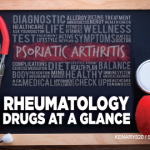Conclusion
Our patients and the community at large deserve a more measured and representative briefing on the risks of serious infection events with biologic agents, not only from us, but also from regulatory agencies and pharmaceutical firms. Even if the low rates are the result of our adherence to the cautionary practice guidance in the boxed warning, truly informed consent compels a shift from emphasis on dire risks toward responsible optimism.
 Paul H. Caldron, DO, PhD, MBA, is a clinical associate professor at Midwestern University, Arizona College of Osteopathic Medicine; a clinical assistant professor at the University of Arizona College of Medicine; and a practicing rheumatologist at Arizona Arthritis and Rheumatology Associates in Phoenix.
Paul H. Caldron, DO, PhD, MBA, is a clinical associate professor at Midwestern University, Arizona College of Osteopathic Medicine; a clinical assistant professor at the University of Arizona College of Medicine; and a practicing rheumatologist at Arizona Arthritis and Rheumatology Associates in Phoenix.
 John R.P. Tesser, MD, is a clinical assistant professor at Midwestern University, Arizona College of Osteopathic Medicine and a practicing rheumatologist at Arizona Arthritis and Rheumatology Associates in Phoenix.
John R.P. Tesser, MD, is a clinical assistant professor at Midwestern University, Arizona College of Osteopathic Medicine and a practicing rheumatologist at Arizona Arthritis and Rheumatology Associates in Phoenix.
References
- U.S. Food and Drug Administration. Remicade: Full prescribing information. 1998:1–25.
- Dao K, Herber M, Habal N, et al. Nonserious infections: Should there be cause for serious concerns? Rheum Dis Clin North Am. 2012 Nov;38(4):707–725.
- Cush JJ. Rules for drug cessation with infection. RheumNow. 2017 Oct 4.
- Berger M, Daniel G, Katherine F, et al. A framework for regulatory use of real-world evidence. Duke. Margolis Center for Health Policy. 2017 Sep 13.
- Erhardt CC, Mumford PA, Venables PJ, Maini RN. Factors predicting a poor life prognosis in rheumatoid arthritis: An eight year prospective study. Ann Rheum Dis. 1989 Jan;48(1):7–13.
- Wolfe F, Mitchell DM, Sibley JT, et al. The mortality of rheumatoid arthritis. Arthritis Rheum. 1994 Apr;37(4):481–494.
- Kazis LE, Anderson JJ, Meenan RF. Health status as a predictor of mortality in rheumatoid arthritis: A five-year study. J Rheumatol. 1990 May;17(5):609–613.
- Gabriel SE, Crowson CS, Kremers HM, et al. Survival in rheumatoid arthritis: A population-based analysis of trends over 40 years. Arthritis Rheum. 2003 Jan;48(1):54–58.
- Kiadaliri AA, Felson DT, Neogi T, et al. Brief report: Rheumatoid arthritis as the underlying cause of death in thirty-one countries, 1987–2011: Trend analysis of World Health Organization mortality database. Arthritis Rheumatol. 2017 Aug;69(8):1560–1565.
- Wadström H, Frisell T, Askling J, et al. Malignant neoplasms in patients with rheumatoid arthritis treated with tumor necrosis factor inhibitors, tocilizumab, abatacept or rituximab in clinical practice. JAMA Intern Med. 2017 Nov 1;177(11):1605–1612.
- Doran MF, Crowson CS, Pond GR, et al. Frequency of infection in patients with rheumatoid arthritis compared with controls: A population-based study. Arthritis Rheum. 2002 Sep;46(9):2287–2293.
- Smitten AL, Choi HK, Hochberg MC, et al. The risk of hospitalized infection in patients with rheumatoid arthritis. J Rheumatol. 2008 Mar;35(3):387–393.
- Lindsey S, Oufnac B, Walker H. Safety of zoster vaccination administration in rheumatic patients on current biologic therapy. Arthritis Rheumatol. 2014;66:S806.
- Lin T-C, Yoshida K, Tedeschi SK, et al. Risk of hepatitis B reactivation in inflammatory arthritis patients receiving disease modifying anti-rheumatic drugs (DMARDs): A systematic review and meta-analysis. Arthritis Care Res (Hoboken). 2018 May;70(5):724–731.
- Richter A, Listing J, Schneider M, et al. Impact of treatment with biologic DMARDs on the risk of sepsis or mortality after serious infection in patients with rheumatoid arthritis. Ann Rheum Dis. 2016 Sep;75(9):1667–1673
- Rutherford A, Patarata E, Subesinghe S, et al. Opportunistic infections in rheumatoid arthritis patients exposed to biologic therapy: Results from the British Society for Rheumatology biologics register for rheumatoid arthritis. Rheumatology (Oxford). 2018 Jun 1;57(6):997–1001.
- Ramiro S, Sepriano A, Chatzidionysiou K, et al. Safety of synthetic and biological DMARDs: A systematic literature review informing the 2016 update of the EULAR recommendations for management of rheumatoid arthritis. Ann Rheum Dis. 2017 Jun;76(6):1101–1136.
- Lacaille D, Guh DP, Abrahamowicz M, et al. Use of nonbiologic disease-modifying antirheumatic drugs and risk of infection in patients with rheumatoid arthritis. Arthritis Rheum. 2008 Aug 15;59(8):1074–1081
- Goodman SM, Springer B, Guyatt G, et al. 2017 American College of Rheumatology/American Association of Hip and Knee Surgeons guideline for the perioperative management of antirheumatic medication in patients with rheumatic diseases undergoing elective total hip or total knee arthroplasty. Arthritis Care Res (Hoboken). 2017 Aug;
69(8):1111–1124. - George MD, Baker JF, Hsu JY, et al. Perioperative timing of infliximab and the risk of serious infection after elective hip and knee arthroplasty. Arthritis Care Res (Hoboken). 2017 Dec;69(12):1845–1854.
- Jinno S, Lu N, Jafarzadeh SR, Dubreuil M. Trends of hospitalization for serious infections in patients with rheumatoid arthritis in the U.S. between 1993 and 2013. Arthritis Care Res (Hoboken). 2018 Apr;70(4):652–658.
- Poiroux L, Allanore Y, Kahan A, et al. All-cause mortality associated with TNF-α inhibitors in rheumatoid arthritis: A meta-analysis of randomized controlled trials. Am J Med. 2015 Dec;128(12):1367–1373.e1.
- Listing J, Kekow J, Manger B, et al. Mortality in rheumatoid arthritis: The impact of disease activity, treatment with glucocorticoids, TNFα inhibitors and rituximab. Ann Rheum Dis. 2015 Feb;74(2):415–421.
- Ranza R, Laurindo IM, Christopoulos G, et al. Decreasing trend of serious infections incidence rate along years in rheumatoid arthritis patients exposed to biologics. Data from two Latin America registries (abstract). Arthritis Rheumatol. 2017 Oct; 69(suppl 10).
- Dobler CC. Biological agents and tuberculosis: Risk estimates and screening strategies. Int J Rheum Dis. 2015 Mar;18(3):264–267.
- Liao TL, Lin CH, Chen YM, et al. Different risk of tuberculosis and efficacy of isoniazid prophylaxis in rheumatoid arthritis patients with biologic therapy: A nationwide retrospective cohort study in Taiwan. PLoS One. 2016 Apr 11;11(4):e0153217.
- Taroumian S, Knowles SL, Lisse JR, et al. Management of coccidioidomycosis in patients receiving biologic response modifiers or disease-modifying antirheumatic drugs. Arthritis Care Res (Hoboken). 2012 Dec;64(12):1903–1909.
- Fraenkel L, Nowell WB, Michel G, et al. Preference phenotypes to facilitate shared decision-making in rheumatoid arthritis. Ann Rheum Dis. 2018 May;77(5):678–683.
- Lofland JH, Johnson PT, Ingham MP, et al. Shared decision-making for biologic treatment of autoimmune disease: Influence on adherence, persistence, satisfaction and healthcare costs. Patient Prefer Adherence. 2017 May 18;11:947–958.
- Siegel CA. Lost in translation: Helping patients understand the risks of inflammatory bowel disease therapy. Inflamm Bowel Dis. 2010 Dec;16(12):2168–2172.
- Cush J. It’s the engine that kills ya’ not the caboose. RheumNow. 2016 Sep 13.



